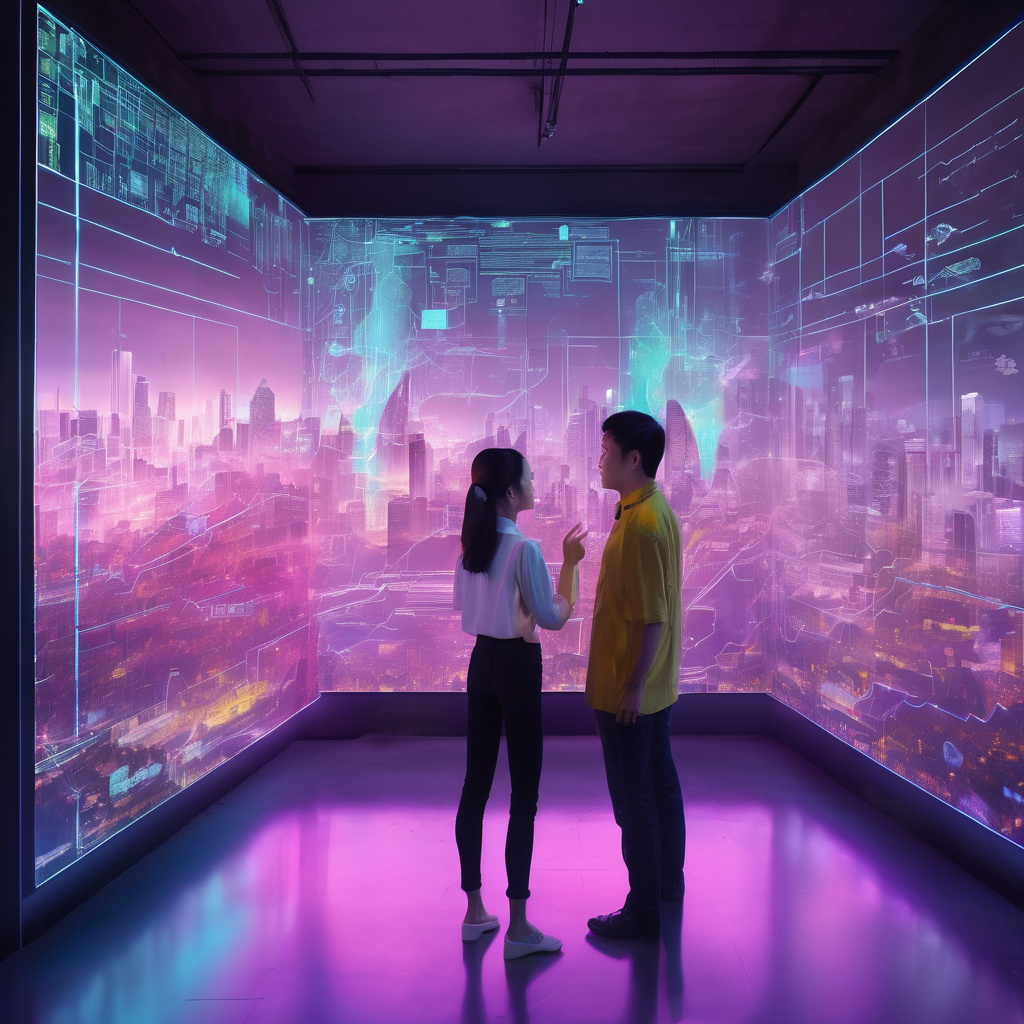The notification pinged on Maya’s phone just as she finished debugging the latest AI model for her father’s digital cartography startup. “Climate change protests block Highway 7,” the alert read, but she barely noticed. Her fingers flew across the holographic interface, adjusting parameters for the neural network that would map the newly exposed Arctic seabed.
Her father, Chen, had built his fortune creating maps for autonomous vehicles and drone delivery systems. But Maya saw something different in the code—patterns that reminded her of the ancient charts her grandmother once showed her, hand-drawn on silk, marking trade routes that connected worlds before satellites ever existed.
“The blockchain verification is complete,” Chen announced, entering her workspace. “Another municipality just purchased our flood prediction maps. They’re preparing for the next hurricane season.”
Maya nodded but kept working. She’d discovered something in the quantum computing lab at university—a way to map not just physical space, but probability itself. While her classmates obsessed over cryptocurrency valuations and the latest streaming series, she’d been quietly revolutionizing cartography.
“I need to show you something,” she said, projecting her work onto the wall. The map shimmered, showing their city, but with translucent layers revealing possible futures: where rising seas might reach, where solar farms could flourish, where communities would thrive or struggle based on infrastructure decisions made today.
Chen stared at his daughter’s creation. It wasn’t just a map—it was a living algorithm that learned from social media sentiment, election polling data, and supply chain analytics to predict humanity’s path forward.
“This could change everything,” he whispered. “Urban planners, governments, even insurance companies dealing with inflation—they’d all want this.”
Maya smiled, remembering her grandmother’s words: “A true mapmaker doesn’t just show where we are, but where we’re going.” She uploaded the first version to their secure server, knowing that by morning, the world would have a new way to navigate not just space, but time itself.
Outside, electric vehicles hummed past their office, following routes her father had mapped. But Maya had charted something far more valuable—a path through uncertainty itself.

Leave a Reply